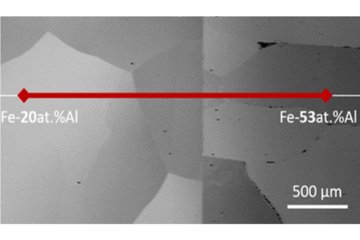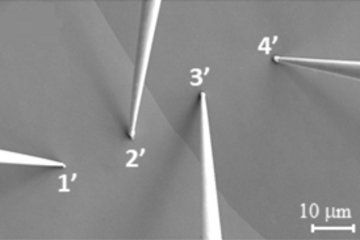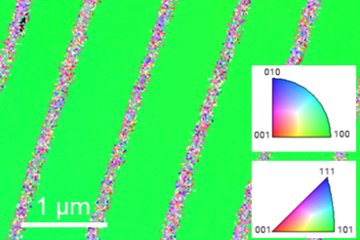All genres
121.
Talk
Microstructure design in thermoelectric materials: in situ observation of doping behavior and role of grain boundary phases. Colloqium, Ruhr-Universität Bochum, Bochum, Germany (2023)
122.
Talk
Abnormal internal oxidation of grain boundary and its cracking behavior under mechanical stress in an FeCr alloy. DPG Spring Meeting 2023, Dresden, Germany (2023)
123.
Talk
Microstructure design in thermoelectric materials: Decoupling the transport properties and in situ observation at operation conditions. Colloqium, TU Darmstadt, Darmstadt, Germany (2023)
124.
Talk
In situ microstructural observation of PbTe thermoelectrics by TEM. Colloquium, Leibniz-Institut für Festkörper- und Werkstoffforschung
, Dresden, Germany (2022)
125.
Talk
A scale bridging approach for analysis of extended defects in thermoelectric materials: From electron channeling contrast imaging, scanning transmission electron microscopy to atom probe tomography. ELMINA2022, Belgrade, Serbia (2022)
126.
Talk
Operando study on the activation and corrosion of (photo)electrocatalysts. Colloquium, Walter Schottky Institut
, München, Germany (2022)
127.
Talk
Operando study on the activation and corrosion of (photo)electrocatalysts. Colloquium, Ludwig-Maximilians-Universität
, München, Germany (2022)
128.
Talk
Developing correlative and in situ microscopy to study structure-property relationships in thermoelectric materials. Modern electron microscopy and correlative techniques, online (2021)
129.
Talk
Parallel Dislocation Networks and Cottrell Atmospheres Reduce Thermal Conductivity of PbTe Thermoelectrics. Virtual Thermoelectric Conference 2021 (VCT 2021) (2021)
130.
Talk
Hematite for light induced water splitting – improving efficiency by tuning distribution of Sn dopants at the atomic scale. Karlsruher Werkstoffkolloquium_Digital (2021)
131.
Talk
Efficiency and stability of catalytic nanostructures. Colloquium, Ludwig-Maximilians-Universität, München, Germany (2020)
132.
Talk
Effect of microstructure on the thermoelectric properties of Ti(Co,Fe)Sb half Heusler. Virtual Thermoelectric Conference (VCT2020), USA (2020)
133.
Talk
Detailed structure and chemistry of structural defects in PbTe based alloys. Virtual Thermoelectric Conference 2020 (VCT 2020) (2020)
134.
Talk
Modern electron microscopy goes high dimensions: handling big data. BIG DATA SUMMER – BiGmax Network, Platja d'Aro, Spain (2019)
135.
Talk
Photocatalytic water splitting and photocorrosion of BiVO4. International Workshop Microscale Motion and Light, Dresden, Germany (2019)
136.
Talk
Electron Microscopy. DGK-AK20 Summer School “Synthesis and characterization of inorganic functional materials”, Mülheim (Ruhr), Germany (2019)
137.
Talk
Effect of planar defects on the thermal conductivity of Ag16.7Sb30Te53.3 bulk thermoelectric. 6th German/Korean Thermoelectric workshop, Daegu, South Korea (2019)
138.
Talk
Effect of interfaces on the photoelectrochemical performance of functional oxides. PICS3 2019 Meeting, Centre Interdisciplinaire de Nanoscience de Marseille, Marseille, France (2019)
139.
Talk
The importance of crystallographic defects in Ag16.7Sb30Te53.3 thermoelectric bulk materials for the thermoelectric properties. EBSD conference 2019, National Physical Laboratory, Teddington, London, UK (2019)
140.
Talk
Correlation of Microstructures and Thermal Conductivity of the Thermoelectric Material Ag16.7Sb30Te53.3. North American Thermoelectric workshop, Northwestern University, Eanston, Chicago, IL, USA (2019)











